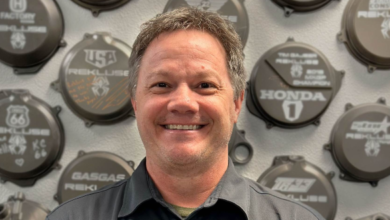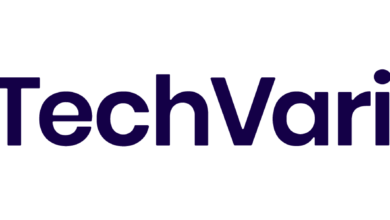How 3 Product Managers Create Order

Somewhere in recent history the word “collab” entered the lexicon, referring to any situation where two or more parties come together to make something happen. In a tech development context, this abbreviation of the word collaboration has important implications, given how the expertise of many is required to make a singular product.
Orchestrating the talents of the many players falls to product managers. Theirs is no simple task, so Built In Chicago asked PMs at CityBase, Clearcover and Intelligent Medical Objects to share how they get people as diverse as engineers, tech leads, UI/UX designers, subject matter experts and key business partners to work together to achieve a common goal.
Read more from professionals who have effectively launched products by using methods and processes that break through the obstacles and challenges.
CityBase provides IT and payments software for public services.
Describe your approach to collaboration in product management. Who do you collaborate with at your company and how?
At CityBase, we prioritize effective collaboration. We do this by engaging the right stakeholders and telling a compelling story. Being a skilled collaborator involves knowing what matters most to your audience and being able to tailor your product to resonate with them.
My role is to equip my team with the extensive customer and business context so they can perform their best work.”
Our product teams at CityBase consist of a product manager, engineers, a tech lead and a UI/UX designer. Effective collaboration means leading with context, not control. Our PMs must possess a fundamental understanding of how the business operates. A PM’s objective is to synthesize ideas, missions and pain points from each area into a cohesive vision for the product’s direction. My role is to equip my team with the extensive customer and business context so they can perform their best work.
I recognize that I won’t possess the same technical expertise as engineers or the UI/UX design skills as designers, but a successful PM knows how to leverage their insights. This involves organizing cross-department touchpoints and providing channels for feedback. This ensures that all stakeholders feel heard and allows us to tap into valuable insights we might otherwise miss.
How can you tell when collaboration is becoming unproductive or inefficient? What are some key signs you look out for?
Frequently ending meetings without making a decision is one such sign. You have a problem and you’ve brought in stakeholders to ideate a solution. Great! However, each one has a different, opposing opinion and they’re not budging. Bringing differing opinions together is beneficial but the goal is to reach a definitive next step. Embrace healthy disagreements as part of the problem-solving process, but beware of ego-driven disputes that impede execution and lead to negative outcomes.
Meeting members who aren’t contributing is another unproductive factor. The meeting has started, and you’ve explained the problem, but now you’re hearing crickets. This could be an overarching symptom of a negative team dynamic. As a PM, it’s crucial to foster an inclusive environment where every voice is valued. Encourage contributions and assure team members that their opinions matter. Empowering individuals can lead to more effective problem-solving and better outcomes.
Another problem is excessive meetings, which can contribute to inefficiencies. Excessive meetings can drain valuable resources, particularly when involving expensive engineering teams. Streamline the meeting schedule and ensure that gatherings are purposeful and action-oriented. Only include necessary participants and explore other ways to troubleshoot.
What are the best practices you’ve developed for keeping collaboration streamlined without tipping into collaboration overload?
My first suggestion is to get comfortable with disagreement. There are a thousand problems thrown your way daily. You simply don’t have the time to wait for all stakeholders to agree. At the end of your meeting, establish that a decision will be made regardless of consensus. Set the precedent that emotions won’t be in play and that discussion is time-boxed. It’s better to test, learn and iterate than to never test at all.
Next, empower your team. Everyone needs to feel that their opinion is important. Creating a meeting space where members aren’t intimated will bring more ideas to the surface. Everyone appreciates being considered, and providing that space will empower them to share ideas. A team that you source solutions from feels more ownership over the solution and the product as a whole.
Honor context over control. It’s easy to operate in a silo. I’ve learned that the product becomes better when I focus on enabling and leveraging the talent around me to do their best work. As long as I’m providing customer and business context, I can rely on our combined effort to always produce a better product outcome. The best product managers know how to leverage the skills of their teams to improve the product.
Clearcover is a fast and affordable digital car insurance provider.
Describe your approach to collaboration in product management. Who do you collaborate with at your company and how?
Clearcover is a remote- and digital-first company, which means my approach to collaboration differs depending on what I am working on and with whom. In order to effectively fulfill my role as the senior director of product, it’s imperative that I create and maintain strong relationships with key stakeholders including my team, key business partners, subject matter experts, engineering leaders and our executive team. I also determine the most efficient way to tackle the work at hand. In some situations, asynchronous collaboration is the best option. Working on a live internal Google Doc or using Slack allows everyone to contribute to the project at a time that best fits their schedule. There are also times when it makes the most sense to have everyone get on a Zoom meeting to work through something in real-time. Having and leveraging the right tools, such as Mural, Google Suite and Excel, is also necessary in order to brainstorm ideas and capture the results we are striving for.
How can you tell when collaboration is becoming unproductive or inefficient? What are some key signs you look out for?
One sign I look for is participation. I ensure that everybody is contributing their thoughts and opinions so that we can gather diverse perspectives on the problem.”
Collaboration requires facilitation and I am constantly checking the pulse of the project with everybody involved to ensure we are working productively and efficiently. One sign I look for is participation. I ensure that everybody is contributing their thoughts and opinions so that we can gather diverse perspectives on the problem. Having this vast input of ideas leads us to the best solution. Other signs of inefficiency may be that a project is taking longer to finish than originally anticipated. This requires regrouping so that we can realign on the main objective. I also look for signs of group morale or lack of creativity. Sometimes we have to allow the group to veer a little off track, flexing our creative muscles to ultimately build out-of-the-box solutions.
What are the best practices you’ve developed for keeping collaboration streamlined without tipping into collaboration overload?
The first step to productively collaborating is making sure the right people are involved. I like to do stakeholder mapping using the RACI matrix (Responsible, Accountable, Consulted and Informed), to confirm I have included the right people for each project. It’s also important to differentiate who needs to be involved versus who needs to be informed of the results. Sometimes, there are too many people with a hand in the project who only need to be aware of the outcome, which may extend the timeline, add confusion or even derail a project. The second step is ensuring that everyone involved is on the same page by identifying a “North Star” metric for each product. Building a product story or narrative helps shape the overall strategy of the project by outlining what the problem is, who it’s for, when it needs to be finished and how it should be solved. And the third step is using the right tools to identify the best way to collaborate. Should it be asynchronous or do we need to get on a Zoom meeting? Getting to know the people you are working with and which style of collaboration works best for them can go a long way.
Intelligent Medical Objects is a healthcare data enablement company.
Describe your approach to collaboration in product management. Who do you collaborate with at your company and how?
Effective Product Management depends on cross-functional collaboration with engineering, user experience, sales, marketing, client services, finance, legal – as well as customers and partners – all grounded on three principles.
The first is to have shared vision and goals. Product managers must ensure their product strategy, in support of our corporate goals, is well understood by all cross-functional team members. This shared understanding guides decisionmaking and focuses on desired outcomes.
Next, we strive for alignment on the product development lifecycle. Cross-functional engagement is more effective and efficient when orchestrated within a predefined framework of activities, deliverables and communication checkpoints — all with clear ownership.
The third principle is empowerment. Cross-functional stakeholders must be relied upon to contribute their expertise and make decisions throughout the development lifecycle. This ensures that initiatives achieve time, scope, budget, value and quality objectives.
How can you tell when collaboration is becoming unproductive or inefficient? What are some key signs you look out for?
Product roadmaps serve as the visualization of product strategy, identifying the features and enhancements necessary for a product to achieve success. When cross-functional teams begin to diverge from their roadmaps in favor of short-term, more individualistic needs — such as attempting to satisfy the unique requirements of a single prospect or segment — then it’s clear collaboration is not as productive as it could be.
What are the best practices you’ve developed for keeping collaboration streamlined without tipping into collaboration overload?
The team needs to regroup on their shared vision and goals, which requires increased communication. But the mechanisms can change.
Be intentional with focused meetings. Emphasize outcomes over process in purposeful, well-structured agendas.”
First, be intentional with focused meetings. Emphasize outcomes over process in purposeful, well-structured agendas. Instead of emphasizing endless collaboration, focus on achieving tangible results and measure progress towards goals.
Second, be selective about participation. Invite only relevant team members to meetings or discussions. Avoid overloading individuals with unnecessary invitations, instead allowing them to focus on their core responsibilities.
Finally, make use of collaboration tools. Use project management software, chat platforms and document sharing tools to facilitate asynchronous communication and maintain a centralized repository of information.



